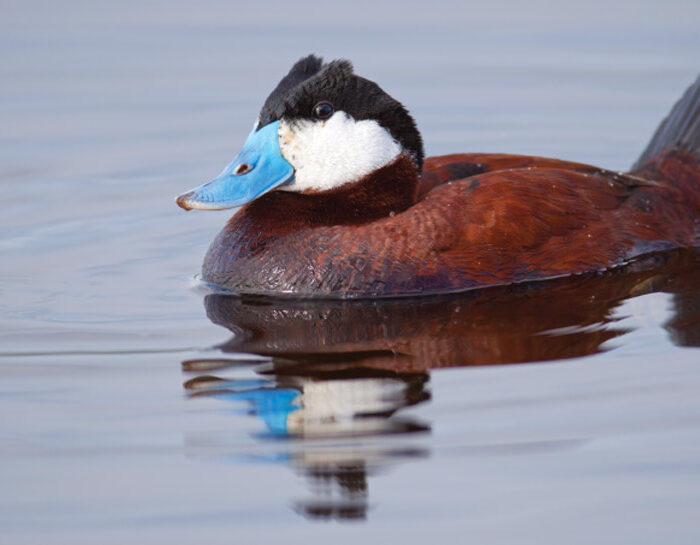Taking Flight
By Wendy Franzen of Fletcher & Fork
By Wendy Franzen of Fletcher & Fork


WHEN I WAS A young girl—turning 7, if memory serves—I received a birthday gift of binoculars and The Audubon Society Field Guide to North American Birds: Eastern Region from my father’s second wife, Jan. It was an olive branch, of sorts. She was, in retrospect, searching for a way to have quiet moments with me, and though it was not something I had asked for—white tasseled majorette boots and a horse were at the top of my wish list in those days—I was intrigued.
The gifted binoculars felt surprisingly heavy in my hands as I ran outside to play with them on that first day, having great fun blurring and zooming in on objects around me with its ridged focus wheel. Jan’s intuition was correct: searching for birds and woodland creatures became a big part of my outdoor childhood experience. And forty years later, binoculars reside an arms-length away on the kitchen counter, ready to focus on our backyard feeders at a moment’s notice. The Audubon Society Field Guide to North American Birds has since been replaced by signed copies of Sibley Birds East and David Allen Sibley’s Birder’s Life List and Field Diary—both treasured Christmas gifts from my husband. And this time of year, I cannot wait to enter the names of migratory birds as they pass through on their way to warmer winter environs.

Throughout September, songbirds like tanagers and grosbeaks who rely on insects for sustenance make their long migration south. Many of the shorebirds have moved on by September as well, but bird migration is still a delight for duck, hawk, and sandhill crane enthusiasts in the month of October. Ruddy ducks, scoters, mergansers, Cooper’s and red-tailed hawks, and Peregrine falcons are all on the list of possibilities to observe this month, as are impressive numbers of Canadian geese.

One of the most thrilling observation opportunities in the area, particulary at Elawa Farm, is catching a glimpse of the sandhill cranes. Laura Calvert, Executive Director of Elawa Farm Foundation shares, “At Elawa Farm, we know it’s springtime when the Sandhill Cranes return to the farm. A pair nests in our vegetable fields, and we’re able to watch—from a distance—as the eggs hatch and the baby cranes scamper around the garden beds. We see the cranes and their offspring return to the farm in the late summer into fall before they move on in their migratory journey.” The nature preserves of Lake Forest Open Lands Association provide tremendous opportunities for bird watching. The Skokie River Nature Preserve is home to many rare Midwest species, and the George Beach Trail at Middlefork Nature Preserve has a hidden wetland that brings fantastic observational chances. Both of these locations draw many birds on their autumnal migratory journey.

The Chicago Botanic Garden offers bird identifying walks in late autumn led by Alan Anderson, research committee chairman of the Chicago Audubon Society. With binoculars in hand, one can learn to identify birds in their sometimes-confusing fall plumage. Participants will no doubt see robin, cedar waxwing, golden-crowned kinglet, white-throated sparrows, and bufflehead, which are all autumn regulars at the Garden.

The great fall migration passes quickly, but the calming benefit of birds can be a part of everyday life, even through the winter doldrums. Birdsong Radio app brings layered bird calls, country sounds, and an opportunity for zen-like tranquility to the palm of your hand.
Speaking of birdsongs: Jan, the stepmother who gifted me that first set of binoculars? Though she and my father divorced long ago, we are still close and when I walk my dog through Forest Park and hear unfamiliar birdsongs, I hit record on my phone and send to her. She always knows.
The Chicago Botanic Garden’s Fall Migration Bird Walks are Saturday, October 3 and Saturday, November 14 at 7:30 a.m. To register, visit chicagobotanic.org or call 847- 835-6801. The Chicago Botanic Garden is located at 1000 Lake Cook Road in Glencoe.
Sign Up for the JWC Media Email